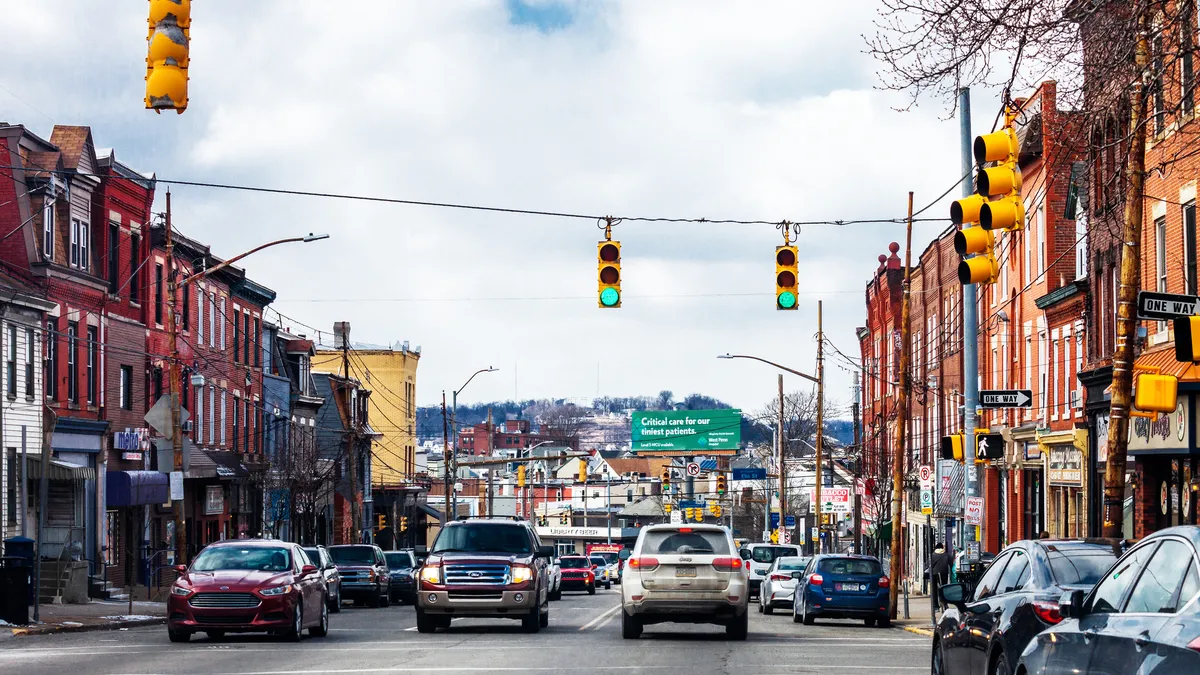A new approach to traffic data analysis has given Pittsburgh valuable insight into how it can make its streets safer for bicyclists and pedestrians. The city contracted with StreetLight Data to measure auto, foot and bicycle traffic. StreetLight then overlayed the data with maps of where bike and pedestrian accidents occurred to give the city a better idea of where to prioritize traffic safety measures among the city's 1,300 core roadway miles.
“Remarkably, high-travel shopping, commercial, and educational institution corridors did not necessarily correlate with crash severity. In fact, the most severe crashes occurred in the areas with lower bike and pedestrian traffic,” StreetLight's report on the project states. Half of the fatal pedestrian crashes and 51% of total crashes in the period studied were in neighborhoods with low pedestrian activity, it states. For bike crashes, it found a lack of adequate bike infrastructure, as well as low bike activity correlated with half of the fatal crashes and 36% of total crashes.
The project used data StreetLight collected, mainly from the pre-pandemic years of 2015-2019, that shows where people were riding and walking. StreetLight tracks movement via data from cellphones and GPS navigation aides to determine when and where trips start and end. It can largely tell the type of travel by speed, the company said. Even if auto traffic moves at a rush-hour crawl, it can still estimate whether it's a bike or car by the length of the trip. This method doesn't count people not using a cellphone or other traceable devices, but it can provide months or years of data from multiple sites. StreetLight said that when it compares its data with that collected through other methods, they correlate pretty highly.
Pittsburgh previously relied on old-fashioned data collection methods, such as using rubber hoses on the street, cameras or head counts to determine traffic volume. Its resources only allowed the city to gather data on a few sites at a time and only for a few days. “It is hard to collect field data for 10 to 20 intersections at a time,” explained Panini Chowdhury, principal transportation planner for the Pittsburgh Department of Mobility and Infrastructure. “It used to take a lot of time and manpower.”
For planning safety improvements, “most cities look at where they see the biggest number of accidents. But you don't get [the picture] unless you look at traffic volume,” Martin Morzynski, StreetLight senior vice president of marketing, explained. “Some of the most unsafe streets aren't the busiest ones at all,” they could have a hazardous crossing because of an overpass or blind curve. “Sometimes, it is those places that need the fix, such as by adding signals, a sidewalk or something to add visibility,” he said.
Such data can help municipalities figure out how to apply for and use the billions of new federal dollars coming their way in the next few years for transportation safety and bicycle and pedestrian infrastructure under the Infrastructure Investment and Jobs Act.
The data doesn’t account for factors such as limited roadway space, hills and curves in roads that Pittsburgh must consider when implementing safety measures such as adding bike lanes, stop signs and pavement markings. “In general, for Pittsburgh, intersections are the most troubling part,” Chowdhury notes. StreetLight's data does provide the number of autos turning at a given intersection, which helps the city determine if it needs a right turn lane, he said.
Since a city can't fix all its traffic problems simultaneously, the data helps it “to prioritize our project corridors where we are seeing high [pedestrian]/bike activity and, hence, a good spot for complete street development,” Chowdhury said. When combined with what the city already knows, the data from this research is helping it choose residential streets that will get traffic calming devices to slow traffic and prioritize pedestrians, bicyclists, and other nonvehicular traffic through its “Neighborways” program. The data can also tell the city if many motorists are cutting through such residential areas. And when the city learned where most bicycle traffic went, it also deployed bike parking in those areas, StreetLight said.
“We have almost two dozen projects in design phase that will get done this year,” Chowdhury said.











